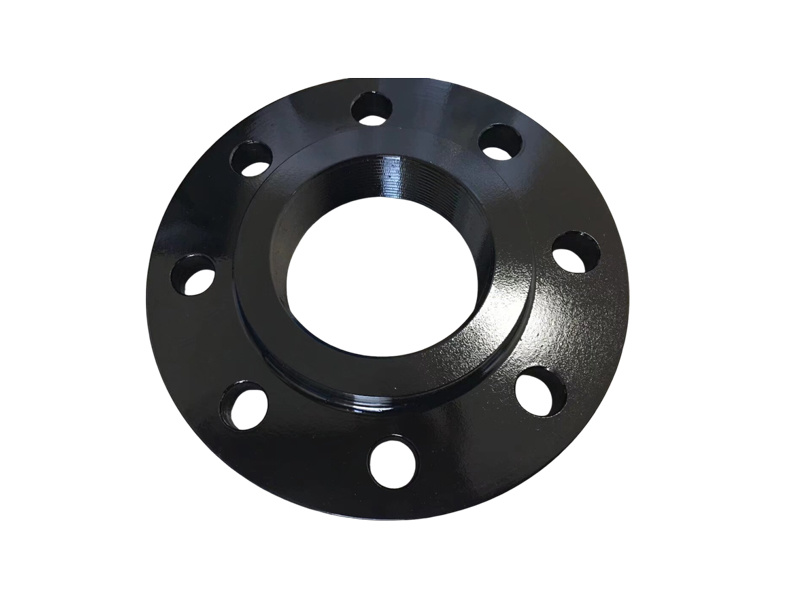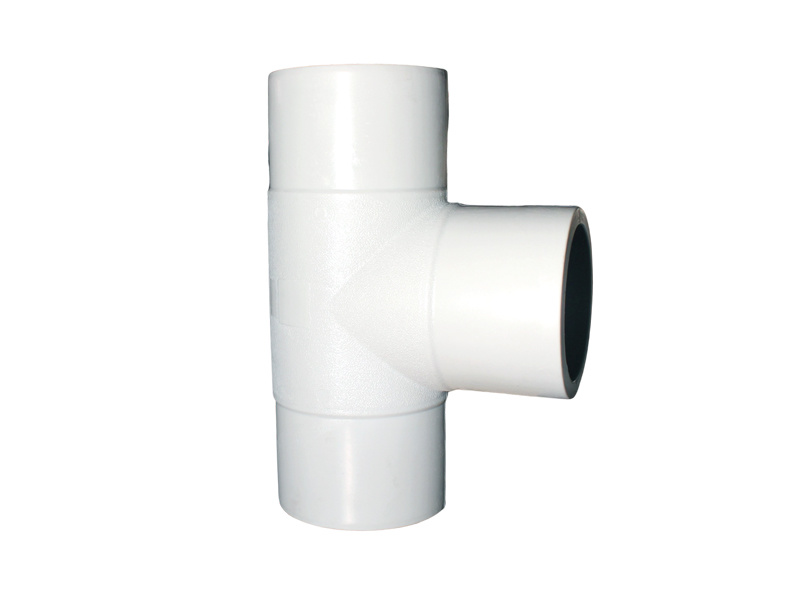-
Understanding the Versatility of Concentric Pipe Fittings: A Comprehensive Guide
Date:
13 Aug,2025
Understanding the Versatility of Concentric Pipe Fittings Table of Contents 1. Introduction to Concentric Pipe Fittings 2. What Are Concentric Pipe Fittings? 3. Key Features and Benefits of Concentric Pipe Fittings 4. Applications of Concentric Pipe Fittings 5. Materials Used in Concentric Pipe Fittings 6. Installation Tips for Concentric Pipe Fittings 7. Maintenance a
Understanding the Versatility of Concentric Pipe Fittings
Table of Contents
- 1. Introduction to Concentric Pipe Fittings
- 2. What Are Concentric Pipe Fittings?
- 3. Key Features and Benefits of Concentric Pipe Fittings
- 4. Applications of Concentric Pipe Fittings
- 5. Materials Used in Concentric Pipe Fittings
- 6. Installation Tips for Concentric Pipe Fittings
- 7. Maintenance and Care of Concentric Pipe Fittings
- 8. Future Trends in Pipe Fitting Technology
- 9. Frequently Asked Questions
- 10. Conclusion
1. Introduction to Concentric Pipe Fittings
Concentric pipe fittings play a crucial role in the construction and plumbing industries. These fittings facilitate the connection of pipes with the same diameter, ensuring a seamless flow of fluids. Their versatility and efficiency make them indispensable in various applications. In this article, we will explore the multiple facets of concentric pipe fittings, from their core functionalities to their diverse applications in modern infrastructure.
2. What Are Concentric Pipe Fittings?
Concentric pipe fittings are specialized connectors designed for pipes that share a common axis, allowing them to align perfectly. Unlike eccentric fittings, which offset the pipe's centerline, concentric fittings maintain the same center point for both pipes. This design is vital in minimizing flow turbulence and ensuring consistent pressure throughout the system.
Types of Concentric Pipe Fittings
There are several types of concentric pipe fittings, each serving a unique purpose:
2.1 Concentric Reducers
Concentric reducers allow for a smooth transition from a larger pipe to a smaller one, ensuring optimal flow without creating turbulence.
2.2 Concentric Elbows
These fittings change the direction of flow between two pipes, available in various angles, commonly 45 or 90 degrees.
2.3 Concentric Tees
Concentric tees enable the branching of pipes, allowing fluid to flow in multiple directions while maintaining pressure.
3. Key Features and Benefits of Concentric Pipe Fittings
Concentric pipe fittings come with numerous advantages that enhance their functionality and reliability. Here are some key features and benefits:
3.1 Improved Flow Efficiency
One of the primary benefits of concentric pipe fittings is their ability to maintain a consistent flow rate. The symmetrical design ensures minimal turbulence, which is crucial in applications where fluid dynamics play a significant role.
3.2 Enhanced Durability
These fittings are typically made from high-quality materials, ensuring that they can withstand extreme conditions, including high pressure and temperature fluctuations.
3.3 Versatility in Applications
Concentric pipe fittings are used in various industries, including oil and gas, water treatment, and HVAC systems. Their adaptability makes them suitable for both residential and commercial projects.
3.4 Easy Installation
The design of concentric fittings simplifies installation, as they align easily with existing pipes. This feature reduces downtime and labor costs during construction or maintenance.
4. Applications of Concentric Pipe Fittings
The versatility of concentric pipe fittings allows them to be employed across numerous applications. Here are some of the most common uses:
4.1 Oil and Gas Industry
In the oil and gas sector, concentric pipe fittings are essential for transporting fluids under high pressure. Their robust construction ensures safe and efficient flow of hydrocarbons.
4.2 Water Treatment Facilities
Water treatment plants utilize concentric fittings to manage the distribution of water efficiently. Their ability to minimize pressure loss is vital in ensuring clean and safe drinking water.
4.3 HVAC Systems
Heating, ventilation, and air conditioning systems often use concentric fittings to connect ducts. These fittings help maintain airflow and improve energy efficiency.
4.4 Residential Plumbing
Home plumbing systems frequently incorporate concentric pipe fittings for their reliability and ease of installation, ensuring effective water distribution throughout the household.
5. Materials Used in Concentric Pipe Fittings
The materials used to manufacture concentric pipe fittings significantly impact their performance and longevity. Common materials include:
5.1 Stainless Steel
Stainless steel fittings are known for their strength and corrosion resistance, making them ideal for harsh environments.
5.2 PVC (Polyvinyl Chloride)
PVC is a lightweight and cost-effective option for residential plumbing, offering good chemical resistance and ease of installation.
5.3 Carbon Steel
Carbon steel fittings provide excellent durability and are often used in high-pressure applications within industrial settings.
6. Installation Tips for Concentric Pipe Fittings
Proper installation of concentric pipe fittings is crucial for maximizing their effectiveness. Here are some tips to ensure a successful installation:
6.1 Measure Accurately
Before installation, measure the pipe lengths accurately to avoid discrepancies that could lead to leaks.
6.2 Use Compatible Materials
Ensure that the fittings are compatible with the pipes being used, as different materials can react adversely and compromise the system's integrity.
6.3 Follow Manufacturer Guidelines
Always refer to the manufacturer's installation guidelines to ensure compliance with industry standards and safety regulations.
7. Maintenance and Care of Concentric Pipe Fittings
Regular maintenance is vital to prolong the lifespan of concentric pipe fittings. Here are some maintenance tips:
7.1 Regular Inspections
Conduct routine inspections to identify any signs of wear or damage. Early detection can prevent costly repairs.
7.2 Cleanliness
Keep fittings clean and free from debris, as blockages can lead to pressure build-up and potential failure.
7.3 Monitor Pressure Levels
Monitoring the pressure levels within the piping system can help identify any issues before they become critical.
8. Future Trends in Pipe Fitting Technology
As technology advances, the future of concentric pipe fittings looks promising. Here are some emerging trends:
8.1 Smart Fittings
The integration of IoT technology in pipe fittings can enable real-time monitoring of pressure and flow rates, enhancing system efficiency.
8.2 Sustainable Materials
The use of sustainable and recyclable materials in the manufacturing of pipe fittings is becoming increasingly popular as industries prioritize environmental responsibility.
8.3 Enhanced Design Innovations
Advancements in design technology are leading to improved pipe fitting designs that enhance performance and reduce material waste.
9. Frequently Asked Questions
9.1 What are the advantages of using concentric pipe fittings over eccentric fittings?
Concentric pipe fittings provide improved flow efficiency and reduced turbulence, making them ideal for applications demanding consistent fluid dynamics.
9.2 How do I choose the right size of concentric pipe fittings?
Selecting the appropriate size involves measuring the pipe diameter accurately and ensuring compatibility with the fitting specifications.
9.3 Can concentric fittings be used in high-pressure applications?
Yes, concentric fittings made from durable materials like stainless steel or carbon steel are suitable for high-pressure applications.
9.4 Are concentric pipe fittings suitable for residential plumbing?
Absolutely! They are commonly used in residential plumbing systems due to their reliability and ease of installation.
9.5 How often should I inspect my concentric pipe fittings?
Regular inspections should be conducted at least once a year or more frequently in high-usage or critical systems to ensure optimal performance.
10. Conclusion
Concentric pipe fittings are essential components in a wide range of applications, providing versatility, efficiency, and durability. By understanding their characteristics, applications, and maintenance needs, we can make informed decisions that enhance the performance of our plumbing and piping systems. As technology continues to evolve, we look forward to seeing even greater innovations in the field of pipe fittings, promising enhanced efficiency and sustainability for future projects.Related News
14 Aug,2025
Understanding BS10 Table D Flanges: A Comprehensive Guide for Construction and Decorative Materials
--- BS10 Table D flanges are a critical component in the realm of plumbing and piping systems, especially within the construction and decorative materials industry. These flanges adhere to the British Standard (BS) 10, which ensures compatibility and reliability in various applications. Understanding their specifications is vital for professionals seeking to incorporate them into their projects. T
13 Aug,2025
Understanding the Versatility of Concentric Pipe Fittings: A Comprehensive Guide
Understanding the Versatility of Concentric Pipe Fittings Table of Contents 1. Introduction to Concentric Pipe Fittings 2. What Are Concentric Pipe Fittings? 3. Key Features and Benefits of Concentric Pipe Fittings 4. Applications of Concentric Pipe Fittings 5. Materials Used in Concentric Pipe Fittings 6. Installation Tips for Concentric Pipe Fittings 7. Maintenance a
12 Aug,2025
Understanding SS Concentric Reducers: Essential Components in Construction
SS concentric reducers are specialized pipe fittings designed to connect two different pipe sizes in a streamlined manner. They are made from stainless steel, which offers durability, corrosion resistance, and aesthetic appeal, making them suitable for various applications, including plumbing, HVAC, and industrial processes. These reducers allow for the smooth transition of fluids from a larger di
Contact information
Address: North Ring Industrial Zone, Mengcun County
Telephone: 86 0317- 6729218 86 0317-6727320
Fax: 0317-6727310
mobile phone: 86 13833761688whatsapp: 86-13780271039
Email: shengyuanflange@163.comLeave Message










